By Danielle Jump, guest blogger |
10 Apr 2025
A King in Miniature: David des Granges and the Image of Charles II in Exile
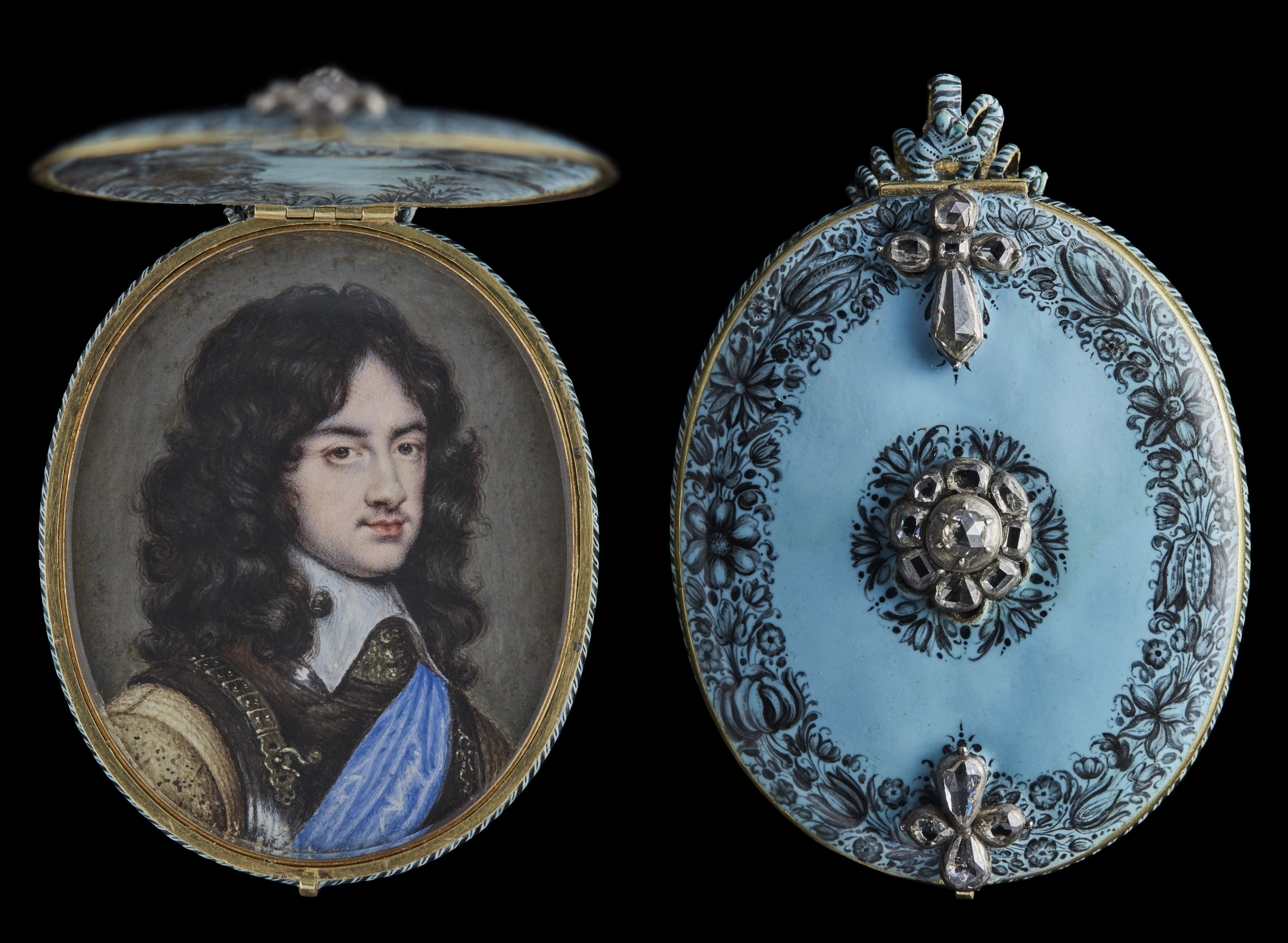 Figure 1
Figure 1DAVID DES GRANGES (1611-1672), PORTRAIT OF KING CHARLES II (1630-85); 1651 - The Limner Company.
Set into the original gold locket, enamelled with designs on base and lid, the lid set with diamonds.
Watercolour on vellum.
Provenance:
Commissioned by Charles II from the artist as a gift to Henry Seymour (Langley) (1612-1686); it descended through the Seymour and Grenville families, including the Dukes of Somerset and Buckingham, remaining at Stowe House. Initially intended to be sold at Christie’s in 1848 (Stowe Sale), yet it was withdrawn and sold privately to William Gore-Langton, related to the Buckingham family. It then descended to the Earls Temple of Stowe, passing to Judy and Brian Harden Antiques, and finally to a UK private collection in 2008.
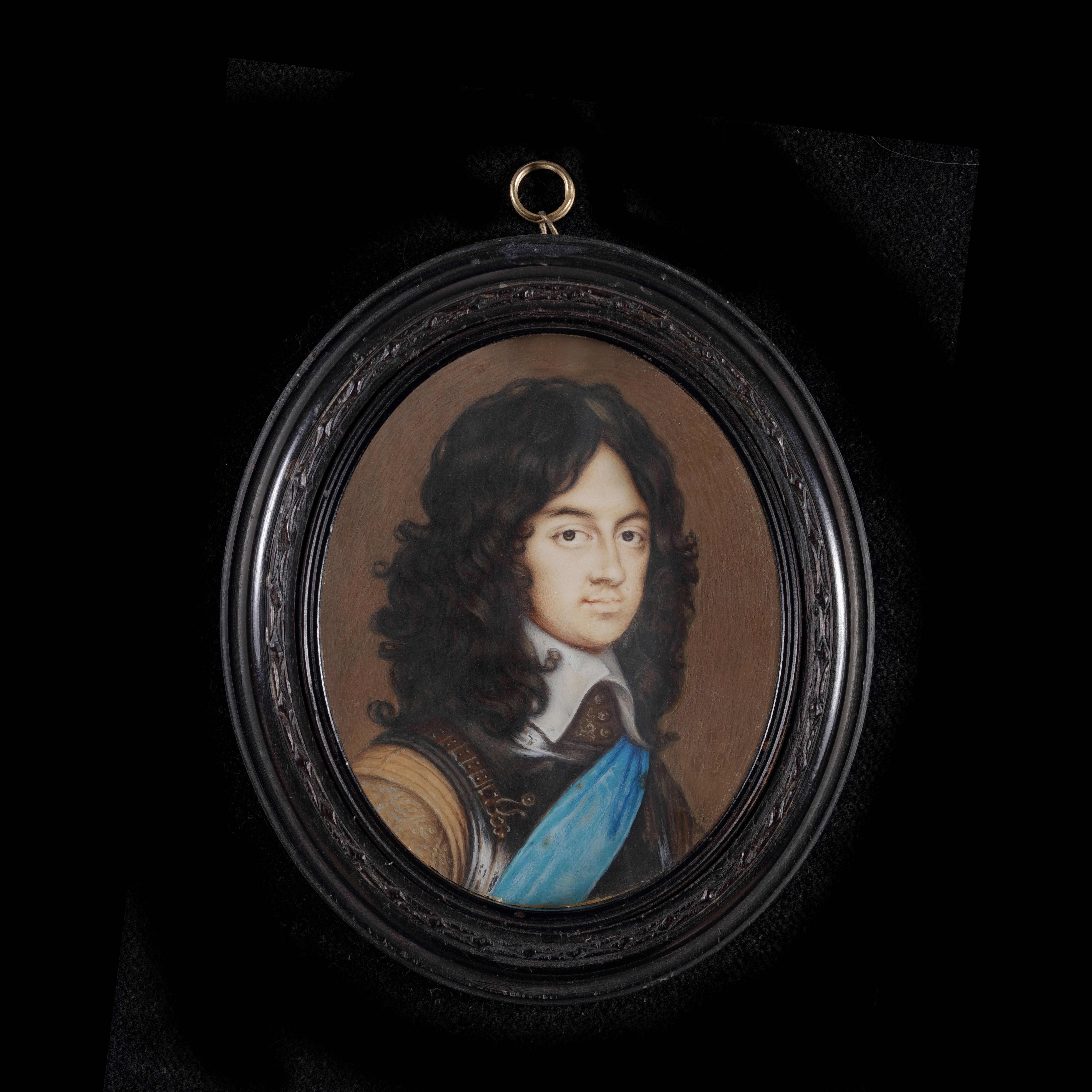 Figure 2
Figure 2DAVID DES GRANGES, PORTRAIT OF KING CHARLES II; circa 1651 - The Limner Company.
Set in a tortoiseshell mount within carved pear wood frame, the reverse with a label inscribed ‘Charles 2d. A supposed Copy from Vandycke’.
Provenance:
Christie’s, London, 9th December 2008, lot 221;
Private Collection, UK.
Depicting Charles II as Prince of Wales, these two portrait miniatures form part of a collection of miniatures painted by David des Granges during Charles II’s exile, for distribution among his supporters. Charles had a long association with this Anglo-French miniaturist, who had painted him as a young boy, copying portraits of him during the late 1630s. Des Granges ongoing support and importance as an artist among the Stuart’s entourage is underscored by his 1651 appointment as “His Majesty’s Limner in Scotland”.[1] This nomination occurred during a significant moment for Charles too, marked by his coronation as King of Scots at Scone in January – an event of crucial importance to the Stuart claim to the throne.
The honour conferred upon Des Granges, nonetheless, came amidst a period of considerable political and military upheaval. While 1651 commenced with the symbolic affirmation of Charles’s kingship, his subsequent attempt to reclaim the English throne culminated in defeat at the Battle of Worcester in October. This loss resulted in Charles becoming a fugitive, pursued across England until his eventual escape to Normandy, France, later that same month. During this period of exile and uncertainty, the production of these two miniatures offer insight into how Charles II wished to be perceived during this period of struggle. Indeed, Charles’s depiction wearing a steel cuirass and armour act as visual symbols of strength and military readiness, emphasising his resolve to regain his kingdom. Far from being a passive exile, Charles actively constructs an image of future action and reinforces his legitimacy in the eyes of his supporters. In this sense, there is a calculated effort on the part of both Charles and Des Granges to maintain a sense of the legitimacy and authority of the Stuart crown, and these miniatures become tangible links to Charles’s tumultuous journey, his quest for the throne and his eventual restoration, all encapsulated within the carefully constructed image.
The Seymour miniature is a key work that reveals further insight into this moment proceeding towards the restoration of the monarchy. Careful research has identified the miniature to be directly commissioned as a gift to Henry Seymour (1612-1686) by Charles in 1651 (Fig. 1). Seymour began his close allegiance to the Stuart family some years prior, with his appointment as Page of Honour to Queen Henrietta Maria in 1638. This was also when he was introduced to Charles as Prince of Wales, when he was employed as Groom of the Bedchamber to the eight-year-old. From this began an extraordinary relationship of loyalty, which is perhaps no better illustrated by the fact that it was Seymour who carried the final message from Charles I to his son, just three days before his execution, which he delivered on 27 January 1649.[2] After the Restoration in 1660, Seymour continued to be a close member of Charles’s court, appointed as Comptroller of Customs and Clerk of the Hanaper, as well as being elected as a member of Parliament.[3]
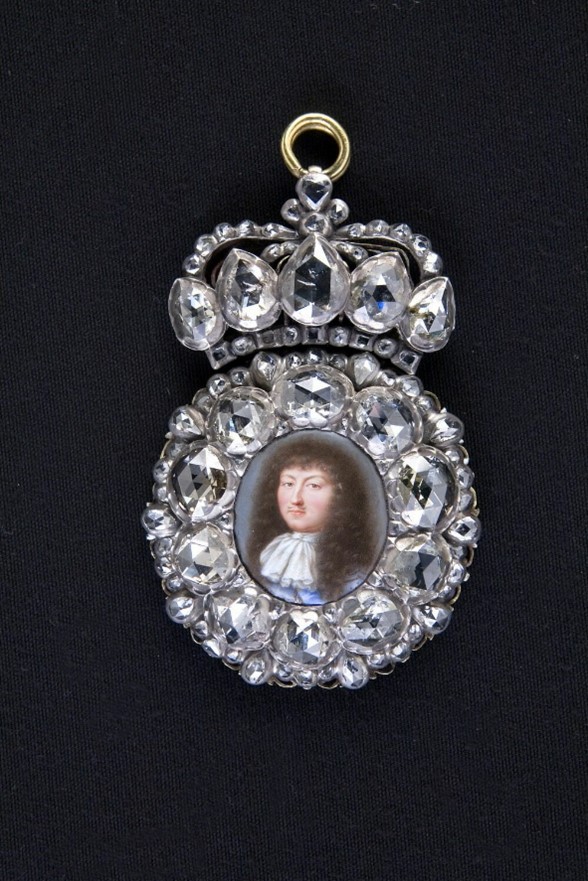
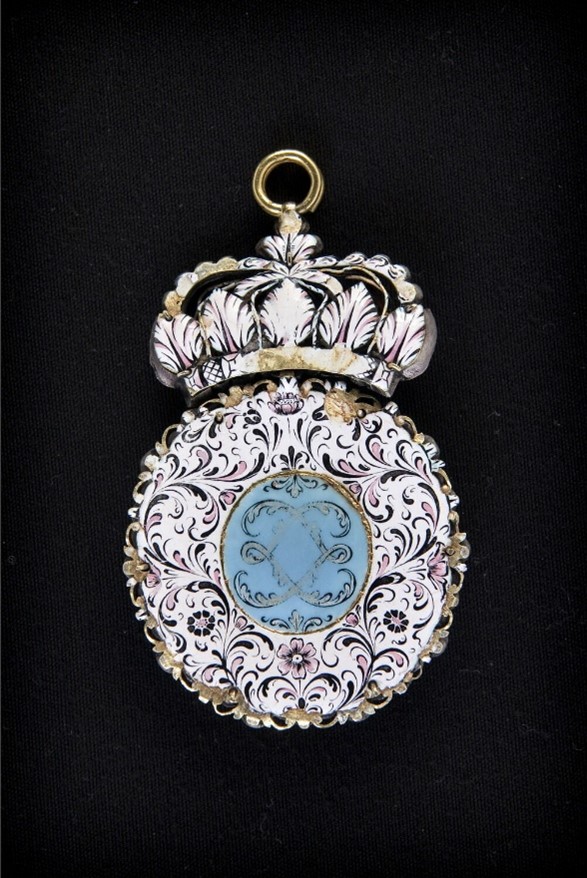
Figures 3-4. Jean Petitot, Boîte à portrait de Louis XIV, c. 1680,
© 2009 Musée du Louvre, Dist. GrandPalaisRmn / Harry Bréjat.
The provenance of the second miniature seems to have been similarly been intended for the distribution among Charles’s supporters. Its composition, derived from a now-lost portrait of the future king painted by Adriaen Hanneman (c. 1601-1671) around 1648, testifies to Des Granges’s commission in strengthening the Royalist cause (Fig. 2). Depicting Charles as Prince of Wales, he is shown wearing the blue sash of the Order of the Garter, accenting his royal status, while his natural, curling brown hair adds a touch of candidness to the otherwise formal portrayal. The craftsmanship of the miniature is further highlighted by its tortoiseshell mount, set within a finely carved pear wood frame, designed to evoke the opulence of ebony. This interplay of formality and intimacy, combined with the delicate artistry, elevates the miniature to a work of exceptional value. Both miniatures subsequently act as crucial visual records during this moment of Stuart exile and the strategic dissemination of Charles’s image in the build up to his return to England to become king.

Figure 5, Jean I Petitot & Gilles Légaré, Portrait of Catherine-Henriette d’Angennes, comtesse d’Olonne, as Diana, c.1680, 1 1/2 x 1 1/4 ins (3.8 x 3.2 cm.), original frame: 2 1/2 x 1 7/8 ins (6.3 x 4.8 cm.), verso. Philadelphia Museum of Art, Mrs. Lessing J. Rosenwald collection, 1961.
Figure 6, Gilles Légaré (1610-85) & Louis Cossin, Livre d’Ouvrages d’Orfèvrerie, plate 7 (detail), 1663, Victoria & Albert Museum, London (E. 5749-1908).
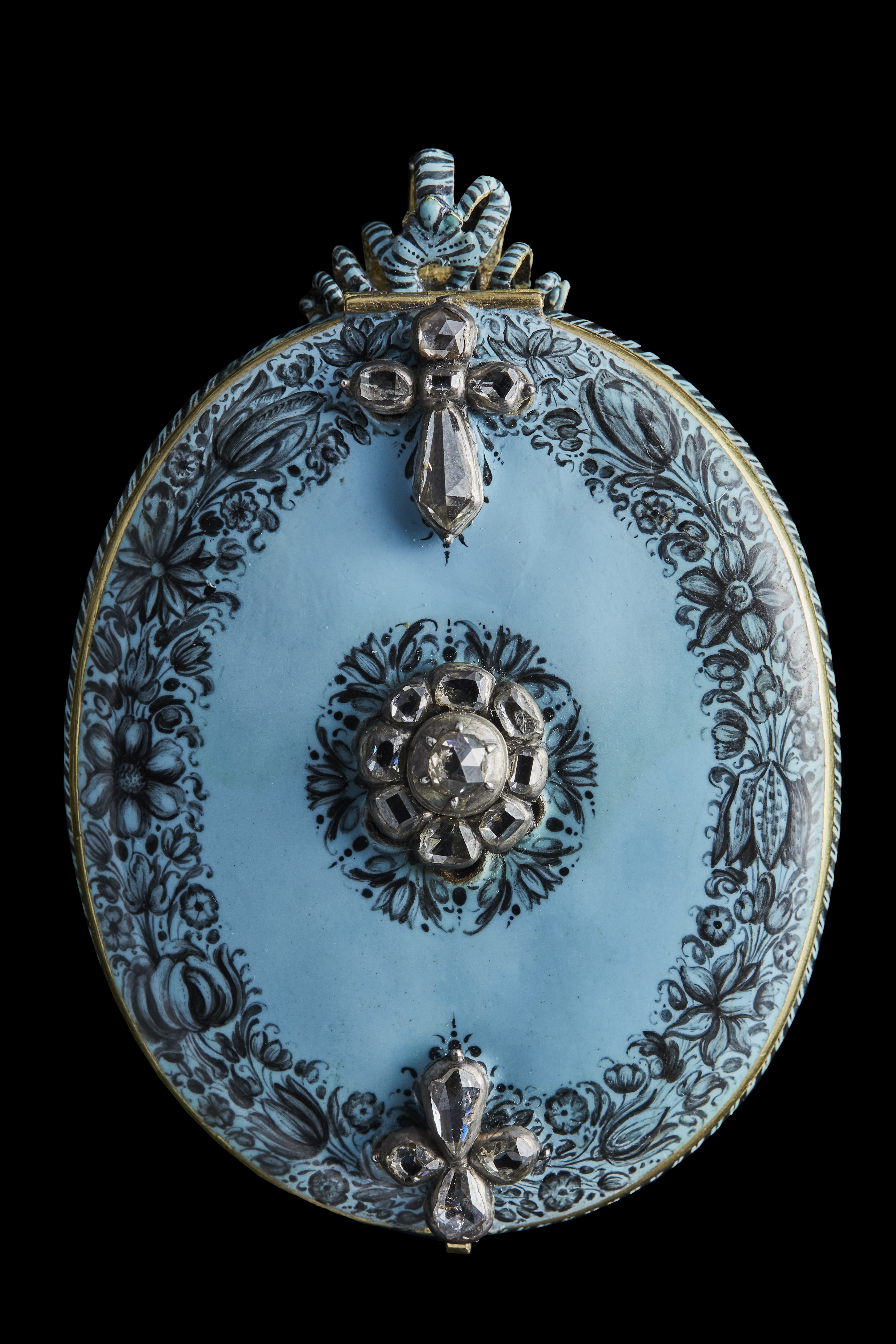
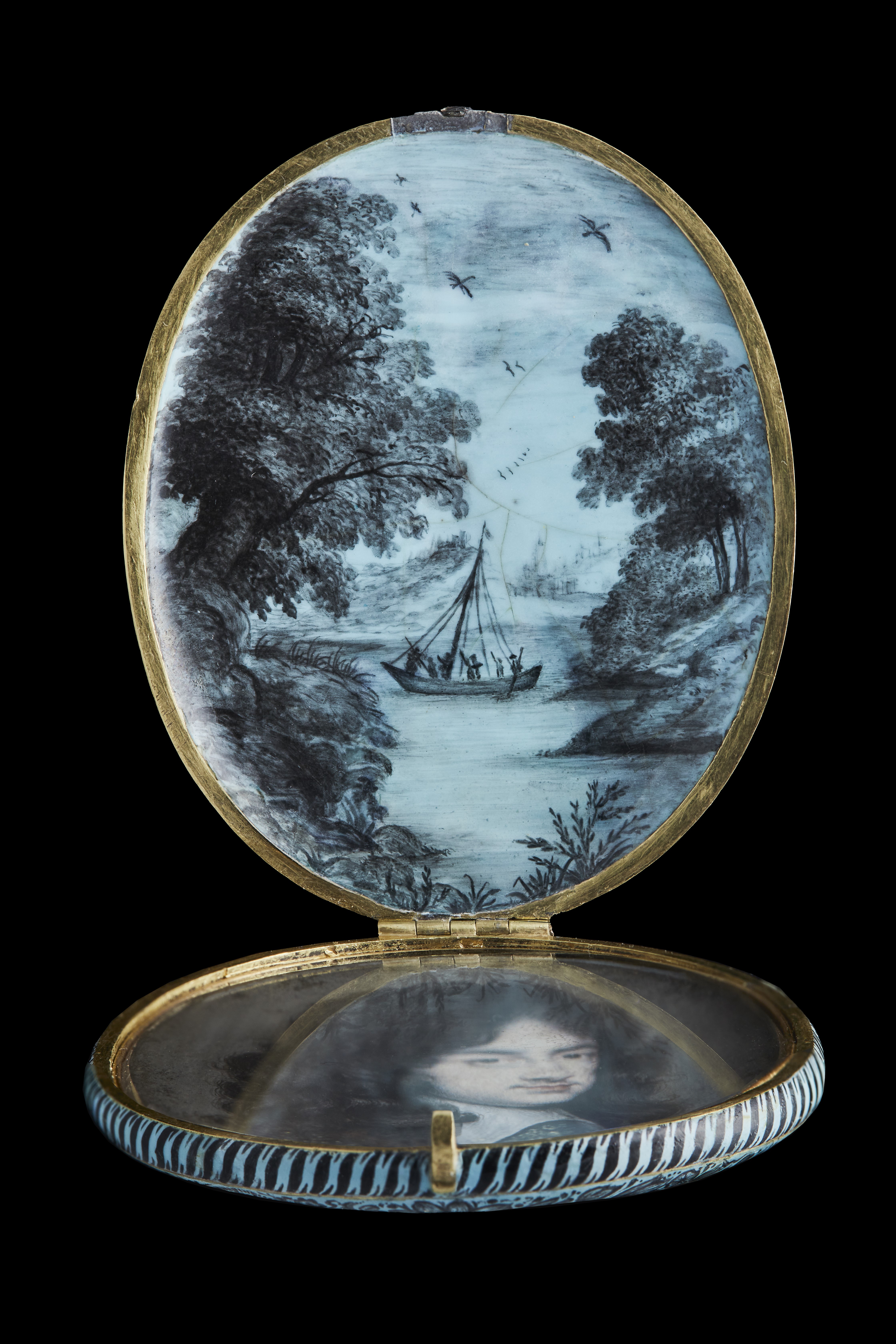
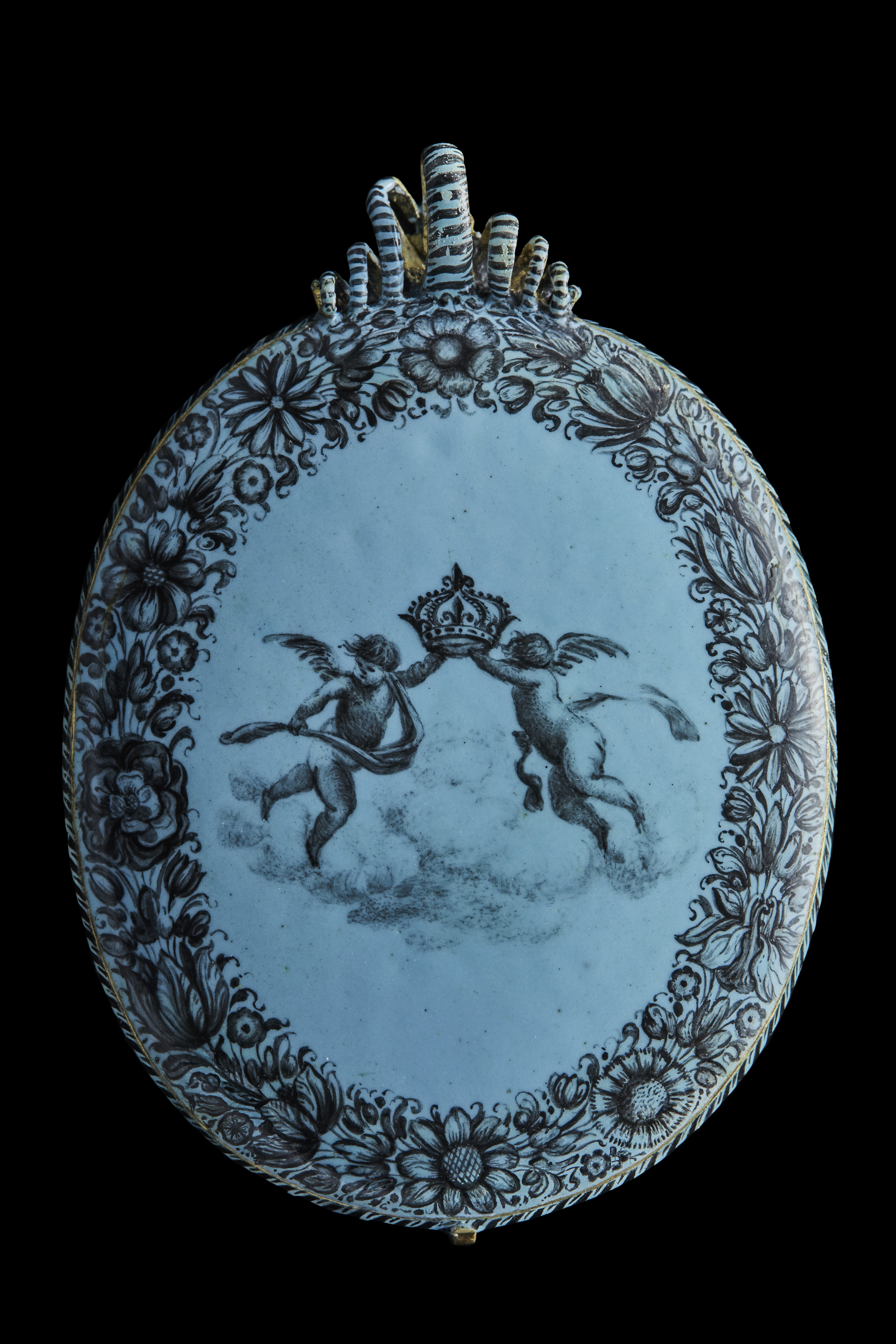 Figures 7,8,9. Lid, interior and reverse original gold locket with a portrait miniature of King Charles II, 1651 by David des Granges
Figures 7,8,9. Lid, interior and reverse original gold locket with a portrait miniature of King Charles II, 1651 by David des GrangesAs well as affirming Charles’s deliberate crafting of his public image, these miniatures highlight the crucial role of leading French artists and craftspeople in shaping such miniature creations. The Seymour miniature is a particularly beautiful example that shows such assimilation of seventeenth-century English and French design. Decorated in blue enamel, encrusted with diamonds, the Seymour miniature bears similarities to designs typical of work carried out by Parisian enamellers and that of the ‘boîtes à portrait’ jewels of Louis XIV’s court (Figs 3,4). Such miniatures, popularised by Louis in the early seventeenth century, symbolised friendship, wealth, beauty, making them ideal tokens of trust, as the one given by Charles to Seymour (Figs 7-9). What is particularly noteworthy is the ways in which Des Granges seems to draw upon the ornamental vocabulary of Gilles Légaré, the goldsmith and jeweller of the French King. As can be observed in the Seymour miniature, a characteristic blue enamel, the abundant garlands of flowers on the lid and verso design bear a comparable likeness to a page in Légarés’s Livre des ouvrages d’orfèvrerie (Figs 5,6). What is more, these ‘boîtes’ seem to become particularly emblematic of the cross-channel artistic exchange during this time, emerging concurrently with the innovative technique of enamel painting on gold. Henri Toutin’s portrait of Charles I (1636), a masterpiece of this technique, exemplifies the shared artistic vocabulary of both French and English seventeenth-century court circles (Fig. 8).[4] In light of this, while des Granges clearly draws inspiration from English miniaturists, including the Mannerist elegance of Peter Oliver and the more naturalistic style of John Hoskins, the exceptional enamelled base and lid display imagery crystallise the place in which this gift was given – Paris (Figs 9,10).
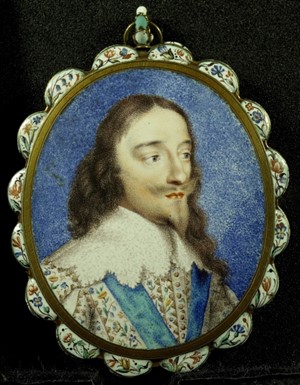
Figure 8. Henri Toutin, Portrait of Charles I, 1636, enamel on gold, Rijksmuseum.
Iconography – Amongst such artistic and political exchange between the French and English courts, the Seymour miniature’s intimate details further reveal a narrative of refuge and ambition. On the interior of the lid, a group of figures cross the Channel, suggestive of a reference to Charles’s own escape during his period of exile. A final image on the back of the locket shows the royal crown held aloft by angel, recognising both the regicide of Charles I and Seymour’s personal devotion to the royal family; a loyal servant who risked his own life to save the crown. Given the significance of the French court as a place of refuge and support during this time, this hidden imagery likely held deep personal resonance for Charles, reflecting both his reliance on French patronage and his aspirations for restoration. The Seymour miniature therefore embodies a complex interplay of political symbolism and personal reflection.
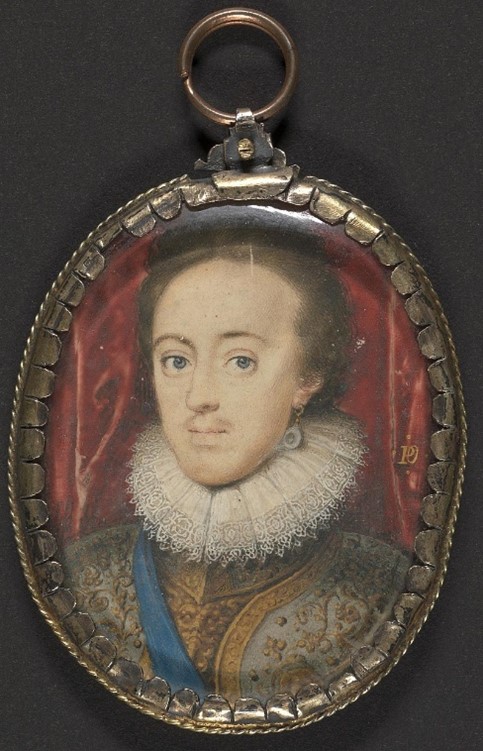
Figure 9. Peter Oliver, Charles I, when Prince of Wales, c.1618-1621, gouache on vellum laid onto a playing card, Yale Center for British Art, Paul Mellon Collection (B1974.2.77).
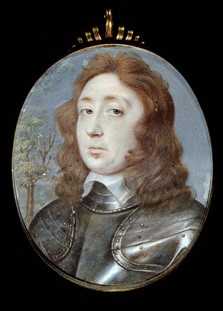
Figure 10. John Hoskins, Portrait of a Man, 1652, watercolour on vellum mounted on table book leaf, Dulwich Picture Gallery.
At a moment of profound uncertainty, Charles II turned to miniature portraits to assert his royal authority. Clad in armour, he projected an image of strength, yet the miniature’s intimate scale allowed him to nurture crucial connections with his inner circle and solidify his ties to France—a delicate balance of power and personal allegiance.
Footnotes:
[1] As described in the accounts kept by David des Granges as recorded in the Treasury Papers from 1671. These papers record a request made by Des Granges for payment for portraits he painted for Charles while he was the King’s Limner in Scotland, including the present work for Seymour.
[2] A collection of original letters and papers, concerning the affairs of England from the year 1641 to 1660.
Found among the duke of Ormonde’s papers, ed. T. Carte, 2 vols. (1739), Vol. 1, p. 337.
[3] Shaw, William Arthur (1897). “Seymour, Henry (1612-1686)”. In Lee, Sidney (ed.). Dictionary of National Biography. Vol. 51. London: Smith, Elder & Co. pp. 322–323.
[4] These boîtes seem to appear alongside the invention of the technique of enamel painted on gold by the goldsmith Henri Toutin, according to Félibien’s dictionary of art terminology. André Félibien, Des principes de l’architecture, de la sculpture, de la peinture, et des autres arts qui en dépendent avec un dictionnaire des termes propres à chacun des arts, Paris, Veuve & Jean-Baptiste Coignard, 1697 (third edition), p. 307-312.
Danielle Jump is an art historian, whose research explores the agency of sixteenth-century artistic exchange in shaping contemporary worldviews and environmental perceptions. Holding degrees from the University of Cambridge and the Warburg Institute, she brings a depth of academic inquiry to her work, drawing upon a broad understanding of art history, including that of Venetian painting, to contextualise her study of miniatures. Her experience includes curatorial support at Museo delle Civilità and research at Christie's Auction House. Danielle is committed to making art accessible and engaging, with a particular interest in exploring how contemporary art intersects with historical forms, including miniatures.







